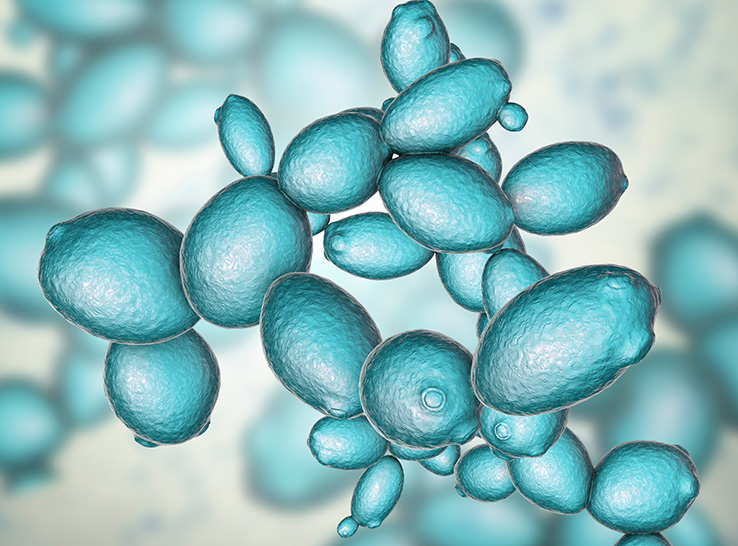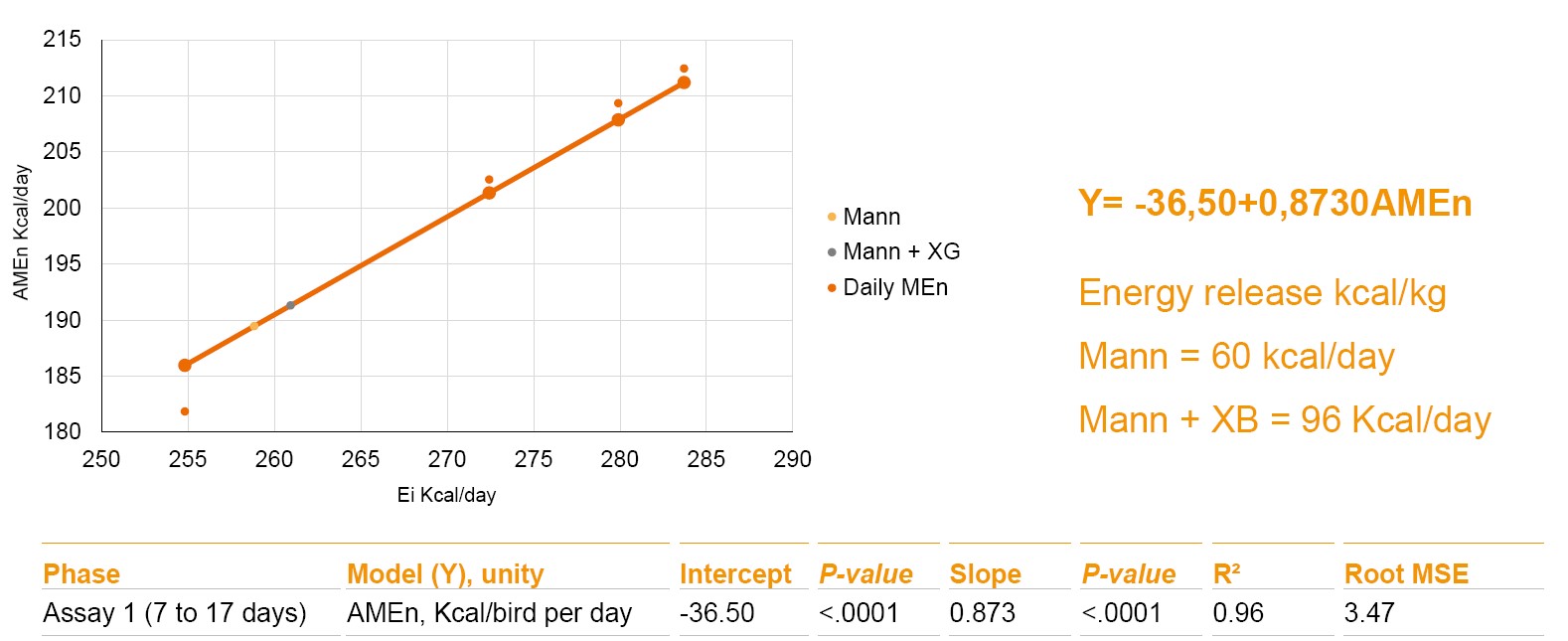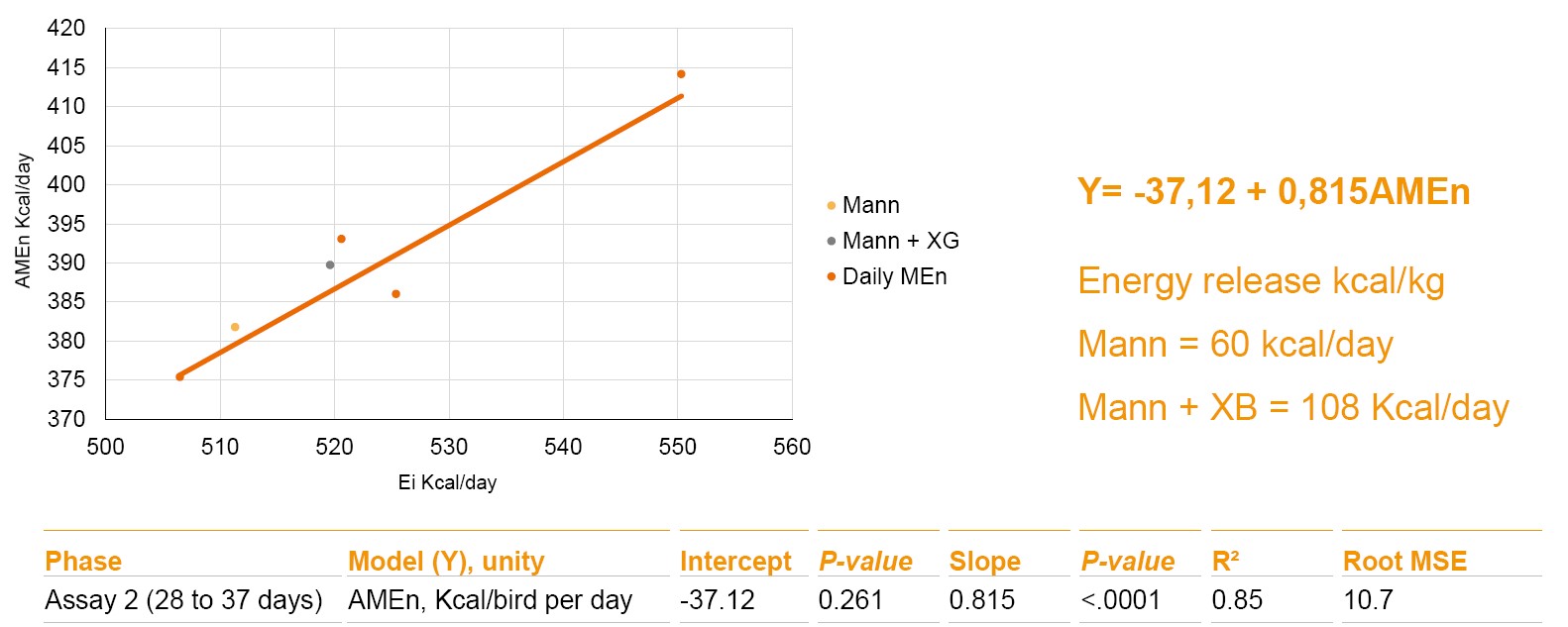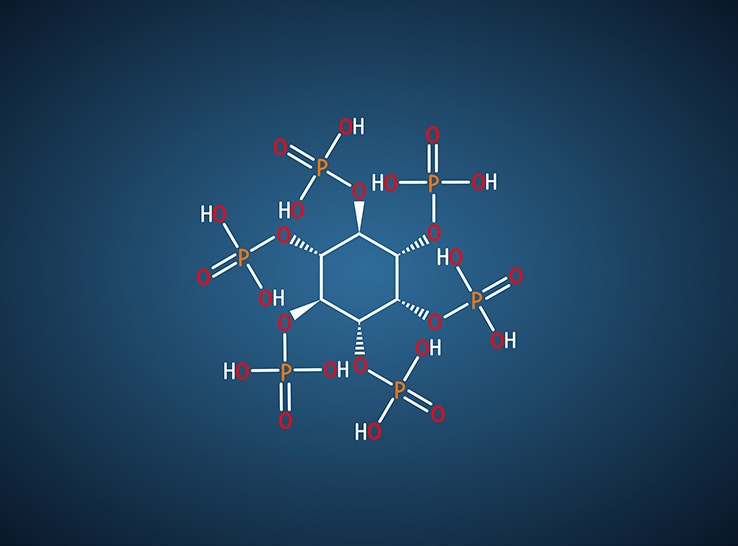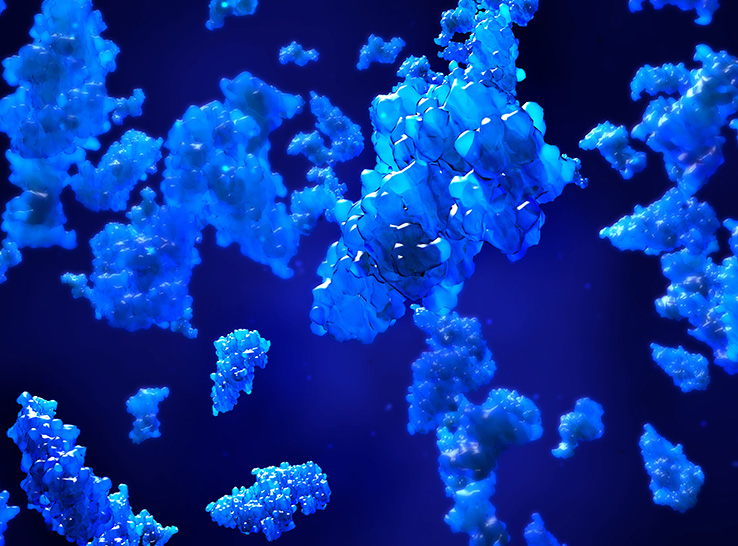Using the commercial feed enzyme β-mannanase can improve energy digestibility of corn-soy feed for chickens, both alone and in combination with xylanase and glucanase, research by São Paulo State University scientists in collaboration with BASF suggests.
Up to 30% of feed fed to poultry is not digested, due to the presence of antinutritional factors, or ANFs, in feedstuffs. One of the main ANFs is β-mannan, which is found in varying levels depending on the type of feed ingredient, with soybean known for having the highest levels among commonly used feed components.
“One of the biggest challenges in poultry production is increasing energy metabolism efficiency by the animals since it represents a huge part of production cost to the global poultry industry,” said Rodrigo Messias, PhD, technical services coordinator–South America at BASF, at the 2024 International Poultry Scientific Forum in Atlanta.
Increasing energy metabolism
Scientists at BASF and São Paulo State University wanted to determine if using β-mannanase (Natupulse® TS) in corn-soy diets of broilers could increase the metabolism efficiency of energy.
The scientists set up two trials, looking at bird metabolism on different diets, alongside a parallel performance trial. They compared six corn-soy diets, each with different energy content and enzyme combinations, with all diets containing phytase.
For the diet with the lowest energy level, they added β-mannanase alone or in combination with a blend composed by β-xylanase + β-glucanase. The first assay ran from days 7 to 17, and the second from 28 to 37. There were 10 replicates per treatment, and the study had a randomized design.
In each case, investigators gave birds time to adapt to their diets and experimental environment before collecting data on energy intake and excreta. Data on the energy intake by the birds and their metabolic energy allowed them to calculate energy equivalence for the different enzymes tested.
“This metabolic trial was a little bit different than usual,” Messias explained.
“Normally, we have just a positive control, negative control and the treatment with the feed additive that we are testing. But in this case, we tried to estimate a linear curve so we could understand how things progress in the animals with the energy reduction.”
Boosting energy release
In their findings, the scientists showed that the enzymes increased the amount of energy extracted from the feed. For β-mannanase alone, the energy released was 60 kcal/kg in both stages of the study, while for β-mannanase combined with xylanase and glucanase (Natugrain® TS), this was 96 kcal/kg in the first assay and 108 kcal/kg in the second (Figures 1 and 2).
“Mannanase does seem to have the effect we hypothesized it would, bringing a significant uplift in energy from the growing birds’ diets,” Messias reported. “The results also suggest that there is an additional benefit of adding xylanase and glucanase on top of mannanase and phytase in corn-soy diets.
“This is potentially useful information for nutritionists, as enhancing the energy utilization in chicken feed can potentially improve overall efficiency in poultry production.”
Figure 1. Results assay 1 (7 to 17 days)
Figure 2. Results assay 2 (28 to 37 days)
Editor’s note: Content on Modern Poultry’s Industry Insights pages is provided and/or commissioned by our sponsors, who assume full responsibility for its accuracy and compliance.

